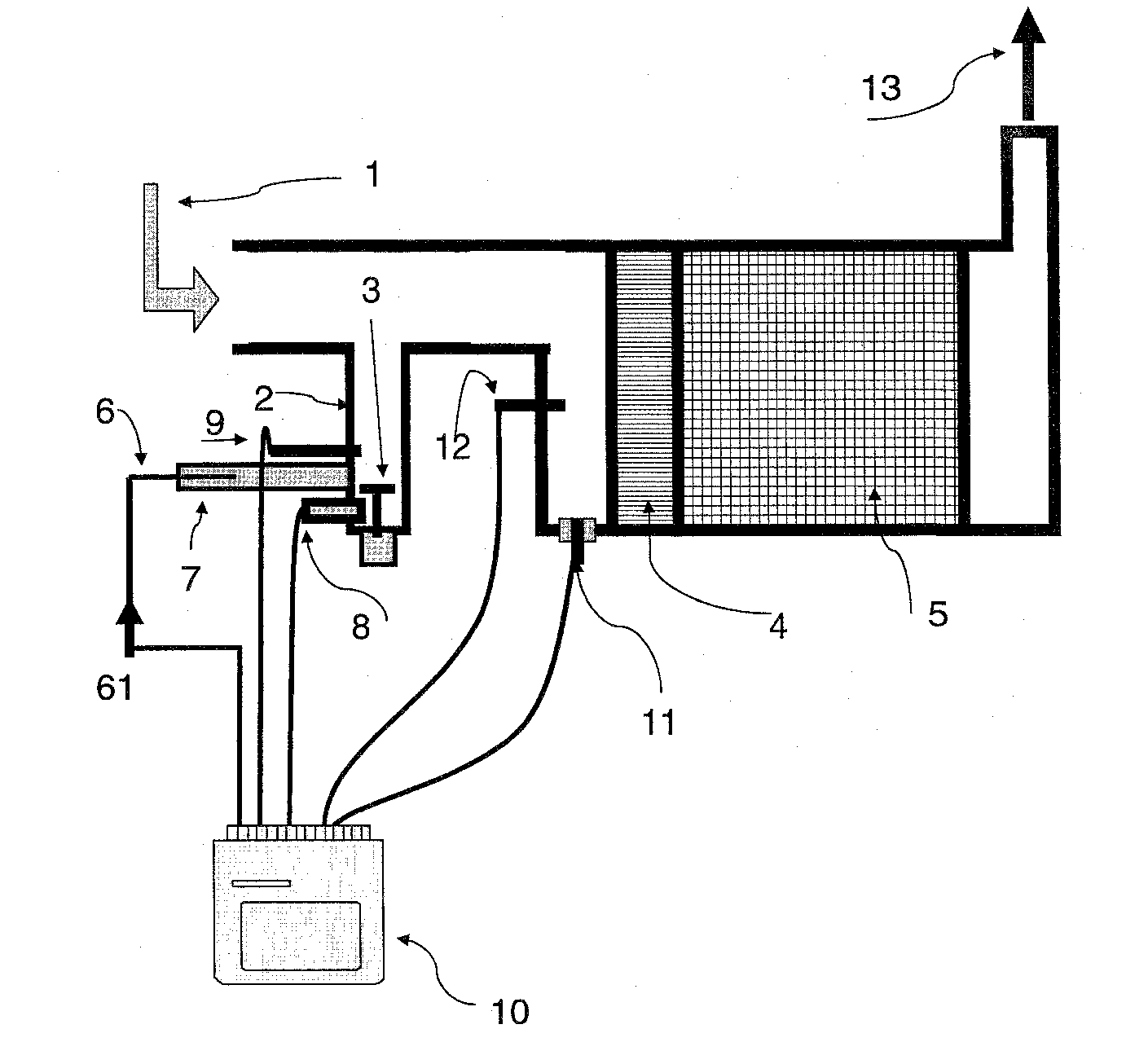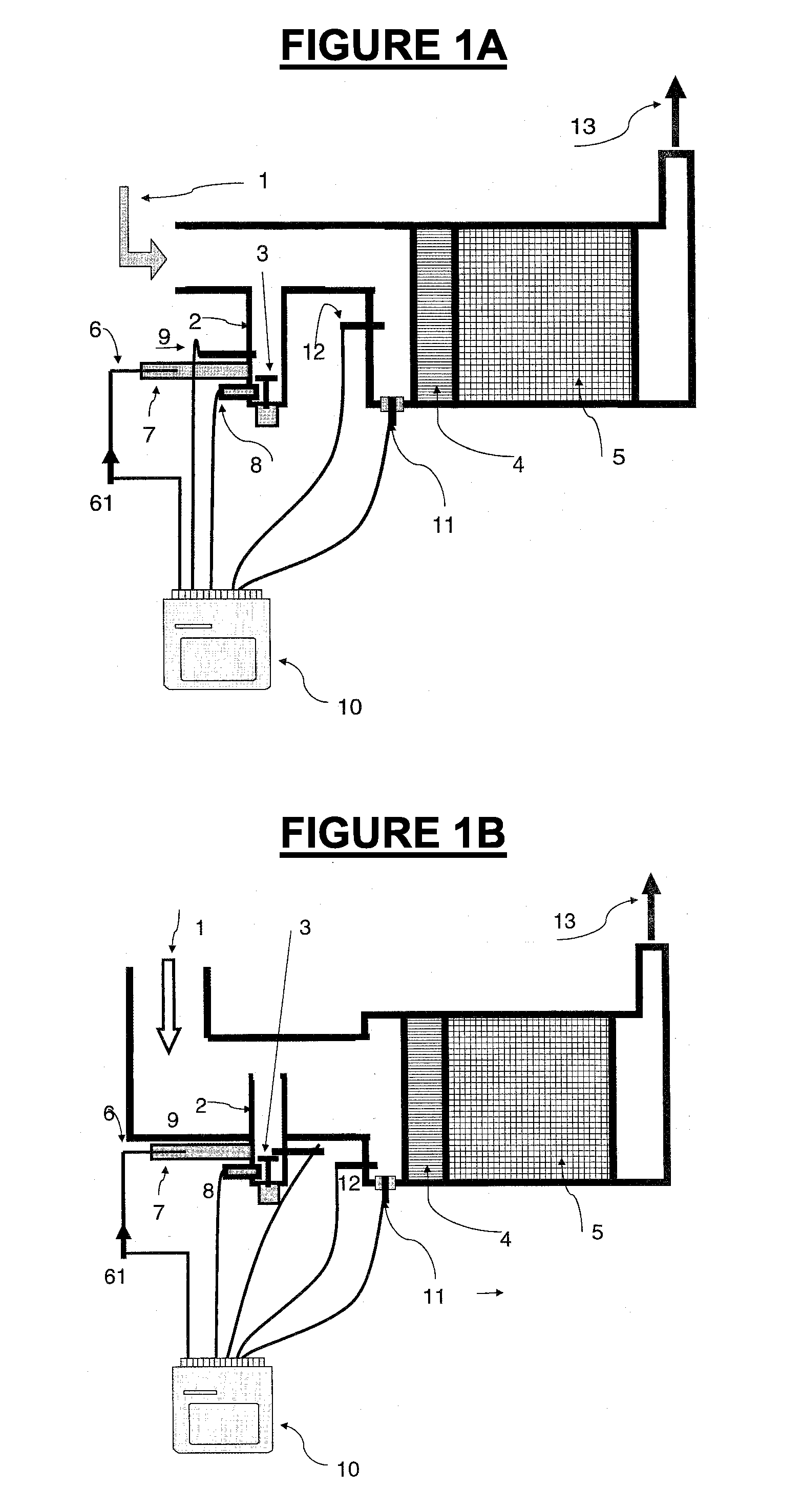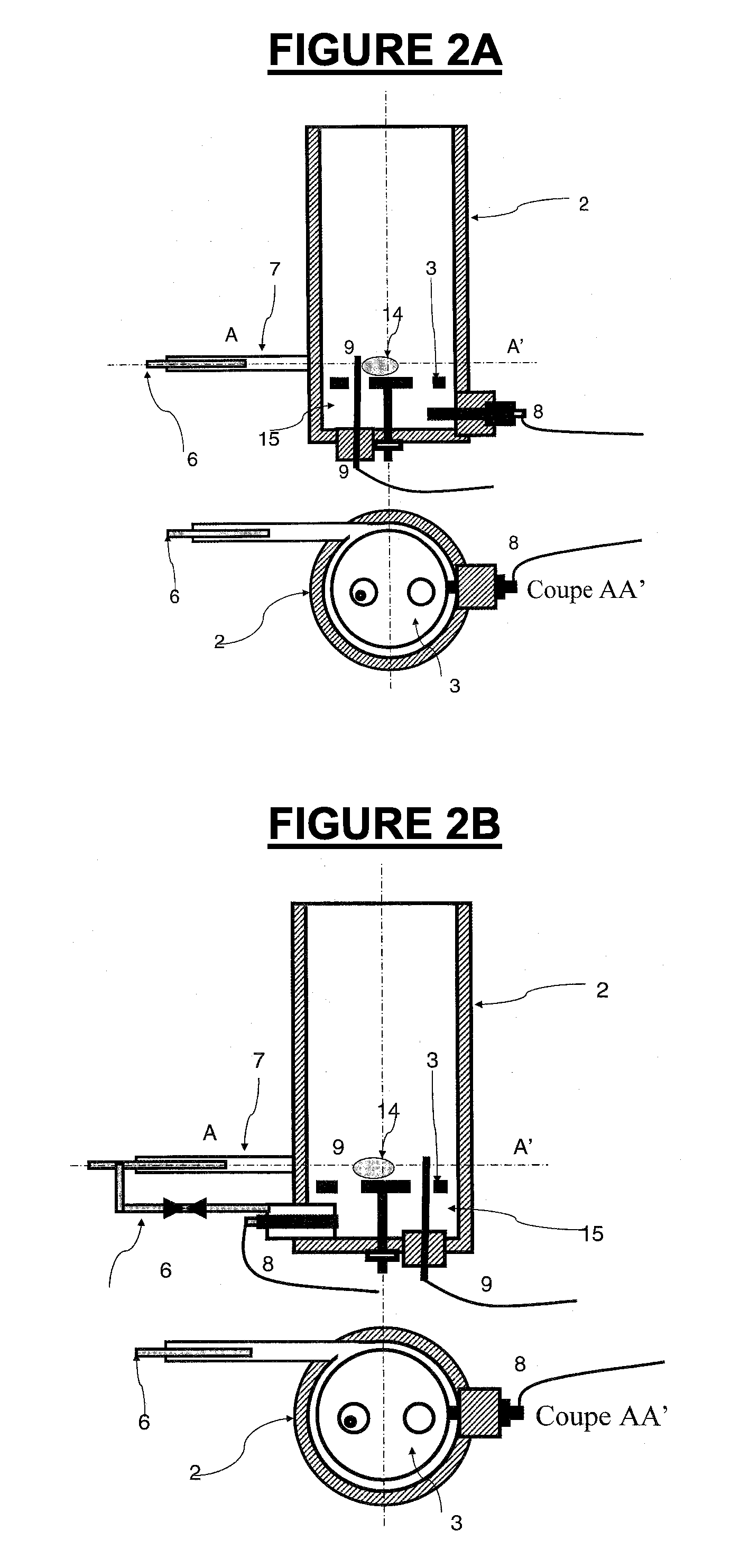Thus, such catalysts provide no significant improvement in the emissions of diesel engines producing numerous solid particulates.
In fact, modifying the
combustion of the engines is no longer sufficient to comply with the directives on releases.
In addition to decreasing the engine performance due to the pressure drops caused by the clogging of the particulate filter, engines equipped with a particulate filter of the prior art are liable to undergo another detrimental process.
This is because, since the clogging misadjusts the engine, the exhaust temperature is liable to rise, thereby causing the sudden and unintended
combustion of a large
mass of solid particulates, so that the temperature rises to levels much higher than 1000° C., possibly exceeding the
thermal resistance of the abovementioned materials constituting the filter cartridge.
The
thermal shock resulting from such a combustion may therefore have a detrimental
impact on the structure of the particulate filter.
However, the major difficulty for ensuring the operation of such particulate filters resides in the possibility of implementing the phases of oxidation and combustion of the solid particulates retained by the filter cartridge.
In fact, in the absence of chemical additives, the carbonaceous particles produced by the combustion of
diesel fuel in a
diesel engine only begin to oxidise above a temperature of 450° C. and to be consumed from 550° C. However, such temperatures are practically never reached in practice in city driving conditions.
Such fuels are only available in a few countries that impose such a limit on their sulphur content, a limit that is nonexistent in many emerging countries.
Moreover, to ensure satisfactory operation of the filters, this technique requires a regular regeneration in order to limit the pressure drop of the filter while eliminating the risk of uncontrolled regeneration, which is therefore too exothermic and destructive for the filter cartridge.
In the opposite case, due to the excessive concentration of carbonaceous particulates clogging the filter, the abovementioned violent reactions occur, consisting of an excessively rapid combustion of a large
mass of solid particulates, which generally leads to destruction of the filter by
thermal shock, since the temperatures obtained may be very high locally.
A first drawback of such a solution resides in the very high cost of the additives to be used.
Moreover, it is necessary to provide a device for introducing the supplementary additive, which further increases the cost of such a solution.
Furthermore, the additives present in the carbonaceous materials contribute to the even faster
fouling of the filter cartridge.
In consequence, a solution of this type increases the risk of clogging of the particulate filter and hence of uncontrolled reactions, when the temperatures reached in operation are not sufficiently high.
However, such methods have the common drawback, on the one hand, of not allowing optimal, safe and economical regeneration of the
filtration means, and, on the other, of undergoing thermal degradation and coking of the regeneration liquid, particularly when the fuel is diesel, especially in the post-injection
injector nozzles.
The post-injection means are thereby rapidly damaged by the heat generated by the
exhaust manifold, thereby reducing their reliability and efficiency.
Furthermore, the known post-injection methods only operate satisfactorily if a minimum
exhaust gas temperature of about 300° C. is reached during at least 5% of the
operating time.
In consequence, the devices and methods implementing diesel post-injection in the exhaust gases upstream of an oxidation catalyst become inadequate when the temperature is too low.
Another drawback of these systems resides in the spurious and
pollutant hydrocarbon emissions generated during the injection phase, when the temperatures are too low, for example around 300° C.
In fact, this implies numerous drawbacks, among which mention can be made of the difficulty of controlling, or even simply initiating, the combustion in the burner, the difficulty of thermally insulating the filter, the high temperature rise of the burner during the combustion phase (above 1400° C.) and the necessity to have a high
filtration capacity to ensure sufficiently long service, that is between two engine stops.
In most cases, the use of a burner to provide the heat necessary for combustion of the solid particulates is only satisfactory when the engine is stopped or idling, that is at the time when the regeneration conditions are the least favourable, because the
exhaust gas temperature is then low.
Moreover, due to the burning powers required, most of the devices have a size that is incompatible with the volume generally available in the particulate filter.
Furthermore, such burners encounter serious difficulties in operating satisfactorily during the normal running of the engine, due to the difficulty of igniting the burner due to the high turbulence prevailing in the exhaust line and hence in the burner.
Such burners consequently demand bulky and sophisticated systems, which are therefore expensive, to overcome these problems.
 Login to View More
Login to View More  Login to View More
Login to View More 


